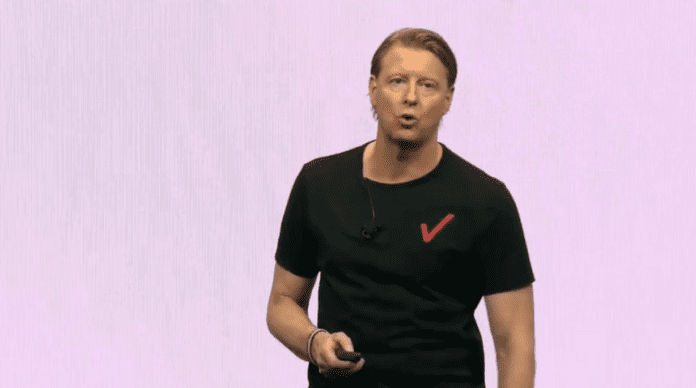Verizon relaunches 5G NR-based fixed wireless service with Chicago activation
Last week Verizon presented its third quarter earnings and reported a small year-over-year increase in total revenue of $32.9 billion, up from $32.6 billion in the same quarter last year and up from $32.1 billion in Q2 this year.
CEO Hans Vestberg, based on a transcript of the earnings call prepared by Seeking Alpha, said it all comes down the network, a message he has repeated since joining the company as CTO then ascending to the top job.
“I think the network team has continued to execute extremely well. I’m confident in our ability to keep winning the third-party awards on the 4G network. We are just continuing to do a really good job there. At the same time, our team is executing on our 5G strategy, and we’re now up to 15 markets where we have deployed our 5G Ultra Wideband. Our commitment with 30 markets by year-end is still committed, and we will continue to do so the rest of this year.”
Vestberg also called out the company’s residential broadband service, 5G Home. Verizon’s initial 5G offering was launched last year in four markets and was based off of the company’s in-house Verizon Technical Forum specification. After parts of those four markets were turned up, Verizon stepped back from 5G Home, waiting for compatible silicon to be developed and commercialized in consumer premise equipment. The service was re-launched in Chicago last week based on the global 5G New Radio standard developed by 3GPP.
Verizon, as well as its competitors, have hit on 5G-based home broadband as a viable alternative to wired internet service and see it as a mechanism to win market share from traditional cable companies.
Click here for a detailed look at Verizon’s Q3 financials.
Vestberg provided some commentary on the now standards-based 5G Home: “That was an important thing for us because as you remember, we launched in four cities with our proprietary software. Now we have it on the global standard software. So that’s an important event for us. And the second important event though of these launches, that we are now having the cell set-up. Remember, we had a North Star, how we want to do this so differently. So yes, you are right, we are launching this, and it’s a lot of new experience that we’re giving to our consumers but also that we are now taking as we have been working since the early launch on the first four cities.”
In response to a question about 5G will prompt evolution in the carrier’s pricing strategy, Vestberg talked somewhat generally about opportunities around service-bundling and value-adds through its media division like offering higher-tier customers Apple Music and Disney+, a video streaming service.
“As we get into 5G, you get a fair amount of new potential ways of charging. I still think that our model for unlimited is really both helping us and our consumers to go to actually move up in the value chain from getting into the, let’s say, the lower tier of unlimited coming up to the sort of the highest. It’s a wide range and, of course, the highest is including 5G. Today, we’re waiving that, but all time we see that if you’re going to get that ubiquitous sort of coverage and capacity, and — that will give us an opportunity.”
To that point about ubiquitous coverage and capacity, Verizon plans to use dynamic spectrum sharing to scale out coverage in 2020. DSS allows the operator, via software upgrade, to operate 5G and LTE in the same spectrum at the same time. Currently Ericsson is the only of Verizon’s RAN vendors–the other two are Nokia and Samsung, that has a product for DSS called Ericsson Spectrum Sharing.

